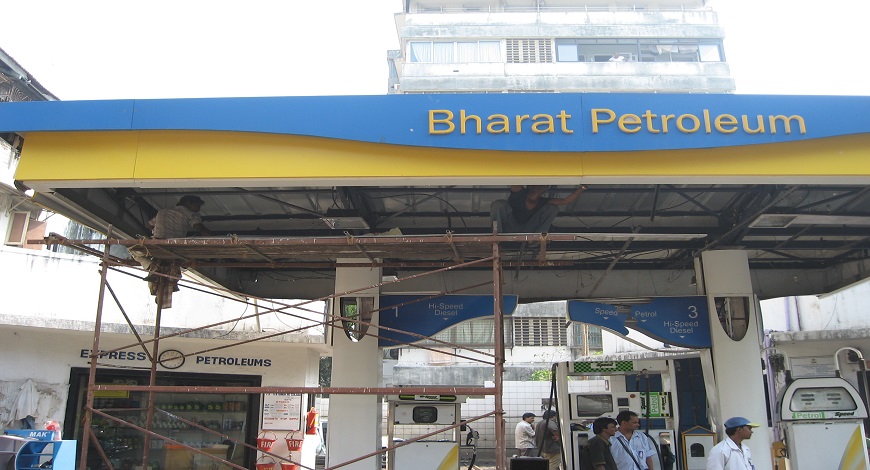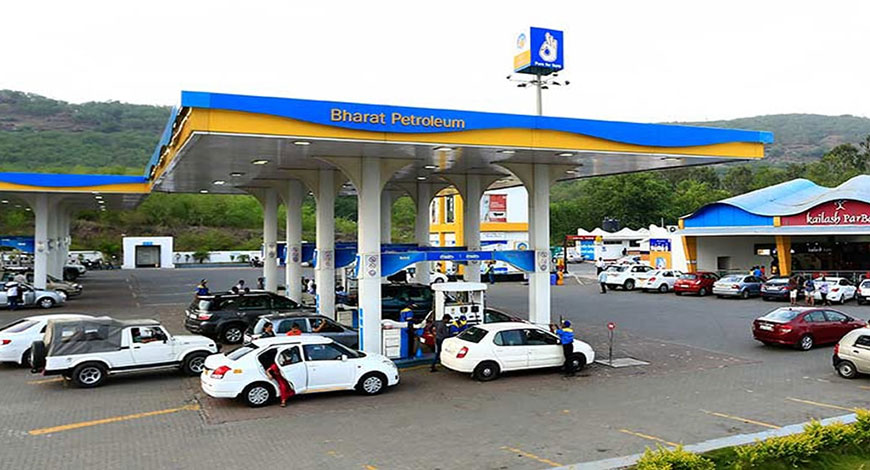- Economy
- Education And Career
- Companies & Markets
- Gadgets & Technology
- After Hours
- Healthcare
- Banking & Finance
- Entrepreneurship
- Energy & Infra
- Case Study
- Video
- More
- Sustainability
- Web Exclusive
- Opinion
- Luxury
- Legal
- Property Review
- Cloud
- Blockchain
- Workplace
- Collaboration
- Developer
- Digital India
- Infrastructure
- Work Life Balance
- Test category by sumit
- Sports
- National
- World
- Entertainment
- Lifestyle
- Science
- Health
- Tech
When Crisis Led to Tech Upgradation: The Story of Bharat Petroleum
The board and senior leadership were continuously monitoring the implementation and provided the much-needed support. The collaborative efforts with BPCL helped the Company and SAP to jointly design, devise and document many India-specific processes that were later useful in other projects that SAP executed in the oil industry and elsewhere within India.
Photo Credit :



Very few people in the current generation would know that the relationship of Bharat Petroleum Corporation Ltd., India’s preeminent Navratna, in its earlier Avatar as Burmah-Shell Oil Storage & Distributing Company of India, dates to 1928. At the time of independence, Burmah-Shell had a dominant presence in India with a 67 percent market share. In the Industrial Policy of 1956, the Government announced that all future petroleum projects would be under the public sector. This led to the formation of the Oil and Natural Gas Commission (ONGC) in 1957, and the Indian Oil Corporation (IOCL) in 1959. A series of geopolitical and industrial issues led to the nationalisation of Burmah-Shell and the formation of Bharat Petroleum Corporation Ltd. (BPCL) in 1976.
In its much smaller reincarnation, its market share came down from 60 percent (as the erstwhile Burmah-Shell) to a meagre 15 percent (as BPCL). From its presence in 90 airports pan-India, it was reduced to two. From 40 LPG plants, it was down to two. The morale within the erstwhile multinational and now with the garb of a public sector undertaking (PSU), was low. There was a mass exodus with nearly 600 people leaving the Company anticipating no future or carer. Its Golden Jubilee was marred with gloom, followed by a long period of stagnation and uncertainty that lasted up to the liberalization of the Indian economy in 1991.
In anticipation of the changing scenario in the sector, in early 1990s, oil and gas companies started to relook at their functioning style in the likelihood of increasing competition from private sector companies should the Administered Pricing Mechanism (APM) be dismantled. The prospect of acquisition by private or MNC companies created a sense of crisis and anxiety. The scenario was either change or perish. U. Sundararajan, then Chairman and Managing Director of BPCL, realised the inability of his company to compete with MNCs post-deregulation, and embarked on an intra-organisational restructuring process to equip the Company to face the challenges. Around the same time, in 1996, Dr. Vijay Kelkar, then Petroleum Secretary, decided that each of the oil companies should take on internationally renowned expert consultants to guide them in this process. IOCL selected McKinsey, HPCL took Andersen, and BPCL chose Arthur D. Little (ADL).
In his presentation to the BPCL Board, Arun Maira, then head of ADL, explained the consulting company’s role as that of providing necessary inputs to build capacity within BPCL and enable them to design and implement a new structure, rather than suggesting what they should do. This was hugely different from taking instructions, mostly from the government, and implementing them, the usual approach at most PSUs. This process provided the Company and its many thousand employees a unique opportunity to collectively ideate and chart their own roadmap for the future.
These structured discussions and debates across organisational levels brought to the fore the deficiencies and difficulties in the Company’s working style. For the first time, in a typical PSU, people were given the license to talk, and even criticise intra-organisational systems and processes. They were also given the opportunity to define their long-term vision for the Company. Four major issues emerged: collective dissatisfaction with status-quo, low customer focus and customer orientation, huge gap between vision and capabilities to achieve it, and opportunities for quick improvement. The ‘Vision Document’ identified ten elements with over 200 initiatives as part of the Change Plan.
The Tech Journey Begins
ADL helped BPCL identify many low-hanging fruits that would form part of the Company’s short-term achievements in its transformational journey. One among them was implementation of the ERP (Enterprise Resource Planning) System. The ERP software typically integrates all facets of an operation including product planning and purchase, development, manufacturing or service delivery, inventory management, sales and marketing, among others with a cross-functional and integrated approach to information-based planning and decision making. In an increasingly complex and geographically diverse business environment, these systems aimed at assisting organisations with timely and authentic information for taking quick business decisions. It also helped in streamlining multi-location procedures and improving communication across regions and hierarchies.
After a lot of back and forth, three ERP vendors were shortlisted. An internal cross-sectional team comprising of IT staff and company managers analysed several solutions and debated the benefits provided by each of the vendors. Finally, the internationally renowned enterprise software company SAP was selected. It took six Board-level meetings to get the necessary clearance for this! Ashok Sinha, then Director of Finance, who later become the Chairman and Managing Director, shared with me how he convinced the Board Members that BPCL really needed SAP ERP. In the mid-1990s, the Company was processing paper to the tune of 2,50,000 invoices per month, and never managed to reconcile anything to anything. Even one percent off the mark was crores of rupees. The amount at stake was huge.
Implementation Challenges in a PSU
Finally, the process began in 1998. SAP brought in the IS Oil Package that was specific to the oil industry. The Company started gradual implementation, first with the lube plants at Wadi Bunder in Mumbai, then the LPG plants, then with sales and marketing and so on. Syamal Bhattacharya, former Executive Director of Corporate Affairs, shared with me an interesting issue that emerged during the ERP implementation. The Company discovered a lot of garbage (junk or incorrect data) in its existing records. There were isolated islands of data in its legacy systems. A classic case of garbage was the stock suspense, which was the difference between the book figure and actual stock of various BPCL products. The solution was to either write it off (missing stock) or write it up (unrecorded stock). Nobody was taking any decision because there was no unanimity on the reasons for this difference in figures. Sorting this required an enormous amount of investigation, backward working and eventual clarification. Over the years, nobody did this and the stock suspense kept on accumulating.
SAP-ERP had no provision to upload different stock figures. Only one number was required. The biggest challenge at that point of time was the choice of figures that should be uploaded – the actual stock number or the number recorded in company books? The senior management took the difficult decision of uploading the actual stock number because that was the tangible and measurable stock of products. Eventually a note had to be sent to the Board of Directors stating the amount of write-off that emerged due to the difference in stock figures. In simple terms, the actual stock was much less than the book figures, and hence the Company had to account that as a loss. The Board demanded an explanation, and the historical perspective was presented. Normally in a PSU board, the Directors could easily take a stand that this was a fraud or a huge theft, and that some vested interests were trying to hush it up in the name of ERP implementation. However, Sundararajan, then Chairman and Managing Director, himself was a finance expert. He explained the context and details to the Board. Due to his personal assurance, the Directors approved the write-off and the Company took a one-time hit in its valuation. With a committed senior leadership, and grass root teamwork, the Company displayed the courage to take tough decisions that hadn’t been taken for over two decades since its nationalisation.
Top Leadership Commitment
In many of the cases, BPCL found that its existing processes were inadequate to meet SAP-ERP requirements. There was a need for change in company processes. SAP had in place some of the best international processes. It was a major challenge within the Company, especially for those belonging to earlier generations, to willingly give up processes that were practiced for many decades and accept and align with a new way of working. To streamline this transition, the top management played a vital role. It had to be a top-down approach given the long-term ramifications of each of the changes. The board and senior leadership were continuously monitoring the implementation and provided the much-needed support. The collaborative efforts with BPCL helped the Company and SAP to jointly design, devise and document many India-specific processes that were later useful in other projects that SAP executed in the oil industry and elsewhere within India.
By 2000, the SAP implementation was complete, and BPCL went live with the software. In 16 months, across 337 locations, and by building necessary skills in over 3,000 end-users within the Company, BPCL accomplished one of the fastest, largest, and most ambitious SAP implementations ever in India, that too as a PSU. This was at a time when nine out of ten ERP implementations in India were unsuccessful. A 2001 study found that the average cost overrun in Indian ERP implementations was 178 percent, average implementation time overrun was 230 percent and average decline in productivity was 59 percent.
Key Outcomes
BPCL had multiple advantages from ERP implementation. This included operational efficiencies, putting the entire supply chain on the same information platform, and inventory management. Earlier, the practice of monthly inventory reviews often led to delays in order processing. Post-ERP, this delay was eliminated, and problems like stock suspense vanished. With access to real-time details cash management became easier. It provided a strong foundation to scale-up many of its future data-intensive innovations including retail e-commerce initiatives. All this gave it an enormous edge over competition.
Interestingly, during the course of implementation, the Company was not recruiting new people. Hence many of its existing employees got trained in SAP implementation and even became SAP consultants. To facilitate this process, the Company established a SAP Competency Centre, which comprised of five teams that focused on process, configuration and development, user authorisation, master data exchange, and training and change management. It planned its rollout of SAP solutions by establishing four regional teams, with the support of SAP Consulting as Project Leader.
BPCL’s ERP was much appreciated and SAP often referred to it on national and international fora. BPCL employees even assisted other companies in SAP-ERP implementation in Malaysia, Indonesia, Thailand, Finland, Qatar, and Australia. In the Indian oil industry, IOCL and HPCL implemented ERP after seeing BPCL’s success. Many other Navratna companies like NTPC took BPCL’s help in their own ERP processes.
The Company had proved that it was not going to be bogged down by the compulsions of being a PSU. Instead, it was setting newer benchmarks in novel areas for others to emulate, a trait it continued to display for the next two decades in as diverse spheres as branding, quality, customer service, and upstream integration through global collaborations in Africa and South America.
Disclaimer: The views expressed in the article above are those of the authors' and do not necessarily represent or reflect the views of this publishing house. Unless otherwise noted, the author is writing in his/her personal capacity. They are not intended and should not be thought to represent official ideas, attitudes, or policies of any agency or institution.

Dr. Shashank Shah
Dr. Shashank Shah has been Visiting Scholar, Harvard Business School and Copenhagen Business School; and a Fellow and Project Director at the Harvard University South Asia Institute. Between 2013 and 2018, he authored three books ‘Soulful Corporations’, ‘Win-Win Corporations’, and ‘The Tata Group’.
More From The Author >>